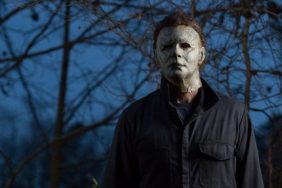
As much as people are talking about the story and science of Interstellar it seems the sound design is getting just as much, if not more attention. In a new interview with The Hollywood Reporter, Christopher Nolan attributed the film’s sound to “very tight teamwork” among composer Hans Zimmer, re-recording mixers Gary Rizzo and Gregg Landaker and supervising sound editor and sound designer Richard King.

“We made carefully considered creative decisions,” Nolan said. “There are particular moments in this film where I decided to use dialogue as a sound effect, so sometimes it’s mixed slightly underneath the other sound effects or in the other sound effects to emphasize how loud the surrounding noise is. It’s not that nobody has ever done these things before, but it’s a little unconventional for a Hollywood movie.”
Nolan cited a specific example in that interview referring to the scene near the beginning of the film as Matthew McConaughey and his two children chase a drone through a cornfield. “It’s incredibly loud… exhilarating and slightly frightening.. I was very keen to try and give the audience the experience and the chaotic feeling with the sound.” Nolan even refers to driving through a cornfield in the back of a car while filming point of view shots to get the scene as he wanted it.
Well, a new featurette from Soundworks, exploring the sound of the film as lead by Richard King, has come online and you get an even greater idea of just what exactly they were going for. This includes using the production track for the film as King says the looped only six or eight lines of dialogue, though dialogue editors Hugo Weng and Bob Kaiser had to go over all the dialogue and put in syllables so they could, as King puts it, “articulate a word a little better”.
When it comes to what King hopes audiences will take from the film he says, “I would hope they would think the sound was all shot on the days they shot the movie and that it’s all there.”
It’s an interesting approach and, as Nolan says, “a little unconventional for a Hollywood movie” to decide to drown out some of the dialogue, going for a more natural approach. I guess the question is whether or not the approach is to hear the film from the audience perspective or from the perspective of the film’s characters. If the audience is meant to be kept at an arm’s distance it would explain why certain bits of dialogue are heard only be the film’s characters and not by the audience… it sounds as if his approach to the entire film isn’t much different than Sofia Coppola‘s approach to the ending of Lost in Translation, which is interesting to consider.
I still need to see the film a second time as the more people talk about it and discuss it the more I want to head back into that world. For now, enjoy this little featurette.
[vimeo id=”112098660″ width=”640″]
Cinemark image via JShooke









